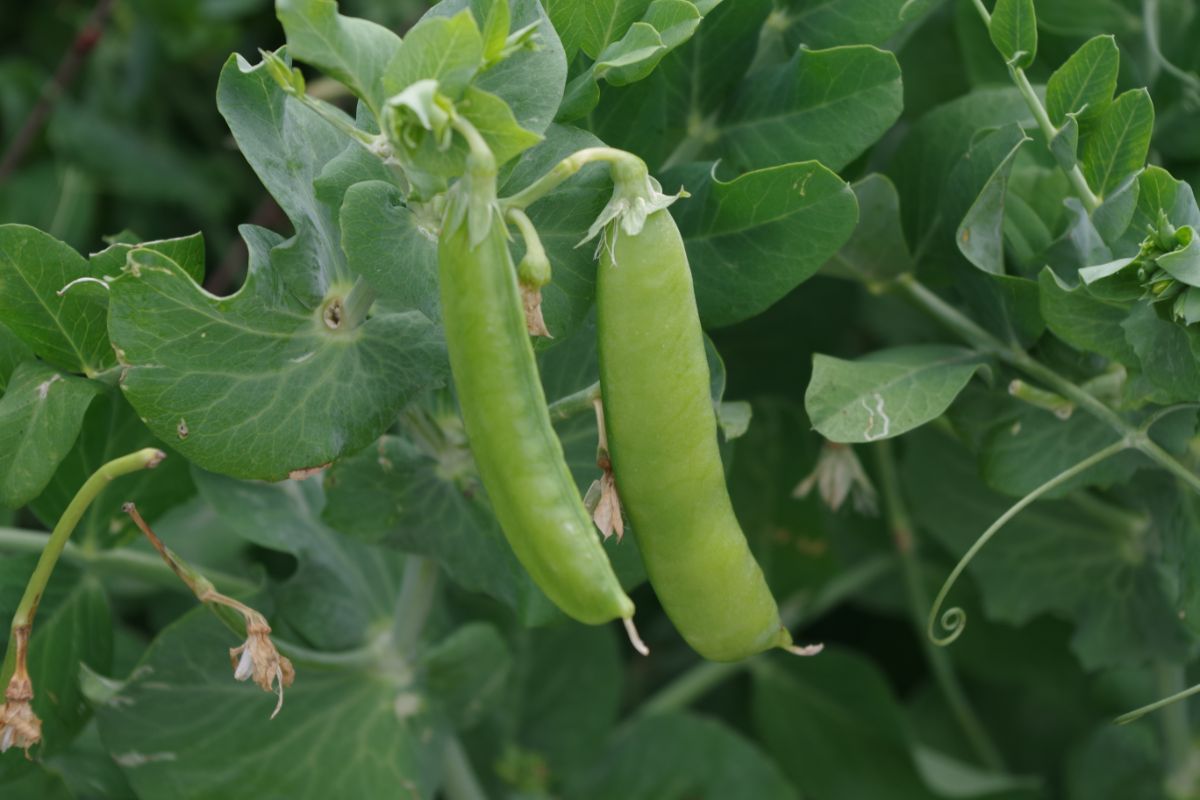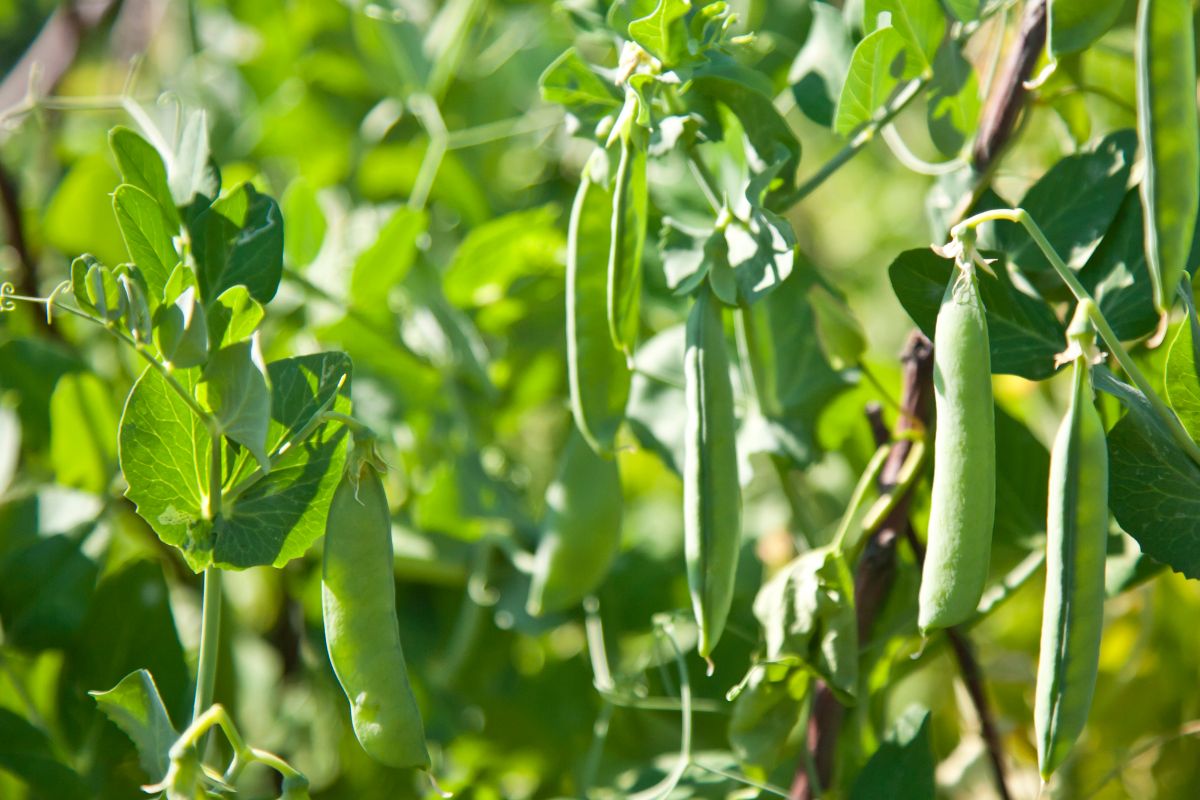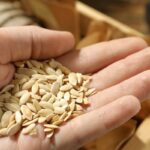Runner beans are popular both as a decorative plant and as a tasty addition to the kitchen garden.
My gramps always grew them when we were little, so they are a familiar feature in the garden for me.

If you’re new to growing runner beans, or you’re a little out of practice, I’m here to help.
This guide will provide an in-depth exploration of growing runner beans, from selection to harvest, with a focus on the UK’s climate and conditions.
Part I: Understanding Runner Beans
Variety Selection
There are numerous varieties of runner beans, each with distinct characteristics, such as:
- ‘Enorma’: Known for long, tender pods.
- ‘Painted Lady’: Renowned for its bi-coloured flowers.
- ‘Scarlet Emperor’: Famous for its bright red flowers.
Your first step when growing runner beans yourself will be to research the varieties and choose the right one for you.
Nutritional Benefits
Runner beans are a popular vegetable to grow because they are fairly easy, and they’re also really good for us.
Runner beans are rich in fibre, vitamins, and minerals, providing a nutritious addition to any diet.
Part II: Planting and Cultivation
Now you know a little more about runner beans, let’s look at some top tips for planting them at home.
Choosing the Right Location
Choosing the right location is important for healthy runner beans – you will want to consider the following:
- Sunlight: At least 6-8 hours of direct sunlight.
- Protection: From strong winds.
- Soil: Well-drained, fertile soil with a pH of 6.5-7.5.
Soil Preparation
The soil you use can make or break a plant, so it’s important to bear these factors in mind before you plant your runners:
- Testing: Test the soil and adjust pH if necessary.
- Enrichment: Incorporate organic matter to improve fertility and moisture retention.
Sowing and Planting
You’ve chosen your location and the right soil, so now it’s time to plant those runner beans!
Indoor Sowing
Runner beans can be started indoors to get a head start on the growing season, particularly in regions with a shorter growing period.
When: 6-8 weeks before the last expected frost.
Containers: Use biodegradable pots or seed trays filled with seed compost.
Planting Depth: Sow seeds 5 cm deep.
Temperature: Maintain a temperature of 18-21°C for optimal germination.
Watering: Keep the soil moist but not soggy.
Transplanting: Harden off plants by gradually exposing them to outdoor conditions before transplanting them after the last frost.
Outdoor Sowing
Sowing directly in the garden is suitable when the soil has warmed, and there is no risk of frost.
When: After the last frost, typically late spring.
Soil Preparation: Ensure the soil is loose, well-drained, and rich in organic matter.
Planting Depth: Sow seeds 5 cm deep.
Spacing: 1-2 seeds per cane, with rows 60 cm apart.
Watering: Water thoroughly after planting, then regularly as needed.
Support
Runner beans are climbing plants and need support to grow optimally.
Setting Up Canes: Arrange bamboo canes in rows or create wigwam structures.
Trellis and Netting: These can also provide suitable support.
Encouraging Growth: Gently tie young plants to support or guide them to climb.
Companion Planting
Certain plants can be beneficial when planted near runner beans.
Marigolds: Deter aphids.
Corn: Can act as a natural support.
Avoid Planting Near: Onions and garlic, as they can inhibit growth.

Part III: Ongoing Care
Now your runner bean seeds are sown, and the hard work commences.
There are a few things you need to remember when growing runner beans:
Watering
All plants require adequate water, but every plant has unique needs. It’s important to understand what these are to avoid over or under-watering.
Frequency: Watering every 3-5 days or as needed.
Techniques: Drip irrigation and mulching to retain moisture.
What Is The Best Fertiliser For Runner Beans?
Many gardeners will choose to fertilize their crops for stronger growth, so bear these things in mind:
- At Planting: Incorporate a balanced fertiliser or well-rotted manure into the soil.
- During Growth: A liquid feed rich in potassium can boost flowering and pod development.
How To Pinch Out Runner Beans
If you’re new to growing runner beans, you may not be familiar with the term ‘pinching out,’ so let’s explore this.
Why Pinch Out?: This encourages lateral growth, making the plant bushier and potentially increasing yields.
When and How: Once plants reach the top of their supports, pinch out the growing tips with your fingers or scissors.
Pest And Disease Management
Pests and disease are every gardener’s nemesis, and different pests will be attracted to different crops.
Here’s what to keep in mind when growing runner beans:
Common Pests: Watch for aphids, slugs, and snails.
Diseases: Be aware of common diseases like bean rust and mosaic virus and take appropriate preventive measures.
Organic Control: Consider using organic pest control methods.
Part IV: Harvesting and Storage
After growing your crop of runner beans comes the fun part – the harvest.
Harvesting Techniques
Timing: When pods are young and tender.
Tools: Using scissors or hands.
Frequency: Regular picking encourages more production.
Storing and Preserving
When you harvest your runner beans, you’ll likely have a large crop – often more than you can eat in the short term. And now that you’ve started to harvest, you’ll have plenty of picking to do.
So knowing your options for storing runner beans is essential:
Short-term: Refrigeration.
Long-term: Freezing, canning, drying.
Part V: Common Mistakes and Troubleshooting
Runner beans are pretty easy to grow, but they are not without their problems.
Every good gardener needs to understand the potential weaknesses and issues when growing any type of plant.
For runner beans, the main things to be aware of are:
- Over-watering or Under-watering
- Incorrect Support
- Nutritional Deficiencies
Frequently Asked Questions About Growing Runner Beans
How Many Runner Beans Per Cane?
It’s recommended to plant 2-3 runner beans per cane. This allows the plants ample space to climb and receive sufficient sunlight, ensuring optimal growth.
A traditional arrangement is to plant in a double row with canes 45 cm apart.
How Long Does It Take For Runner Beans To Grow?
From the time of sowing, runner beans typically take about 12-14 weeks to reach maturity and be ready for harvesting.
The exact time can vary based on environmental conditions and the specific variety being grown.
We can break it down into the different stages:
Germination: Seeds typically germinate in 7-14 days.
Flowering: Expect flowers after 6-8 weeks of growth.
Harvesting: Beans are usually ready to harvest in 12-14 weeks from sowing.
Do Runner Beans Need Watering Every Day?
While runner beans don’t necessarily need daily watering, they do thrive in consistently moist soil. It’s crucial to water them regularly, especially during flowering and pod-setting stages.
However, the frequency will depend on the weather conditions and the moisture retention capacity of the soil. During hot, dry periods, more frequent watering might be necessary.
Final Thoughts
Growing runner beans successfully requires a blend of proper selection, planting, care, and harvesting.
Understanding each step in the process can make the difference between an average crop and an extraordinary one.
Whether for ornamental purposes or culinary delight, these top tips on growing runner beans are designed to ensure success in your garden.
From the novice to the expert gardener, this guide provides detailed insights and practical advice for a bountiful harvest. Enjoy the process and the product of your gardening efforts with runner beans.
- Can You Grow Bell Peppers Indoors? A Guide For New Gardeners - November 14, 2023
- Composting Basics: Can You Compost Mushrooms? - November 6, 2023
- A Gardener’s Guide To Growing Carrots In Raised Beds - November 1, 2023






